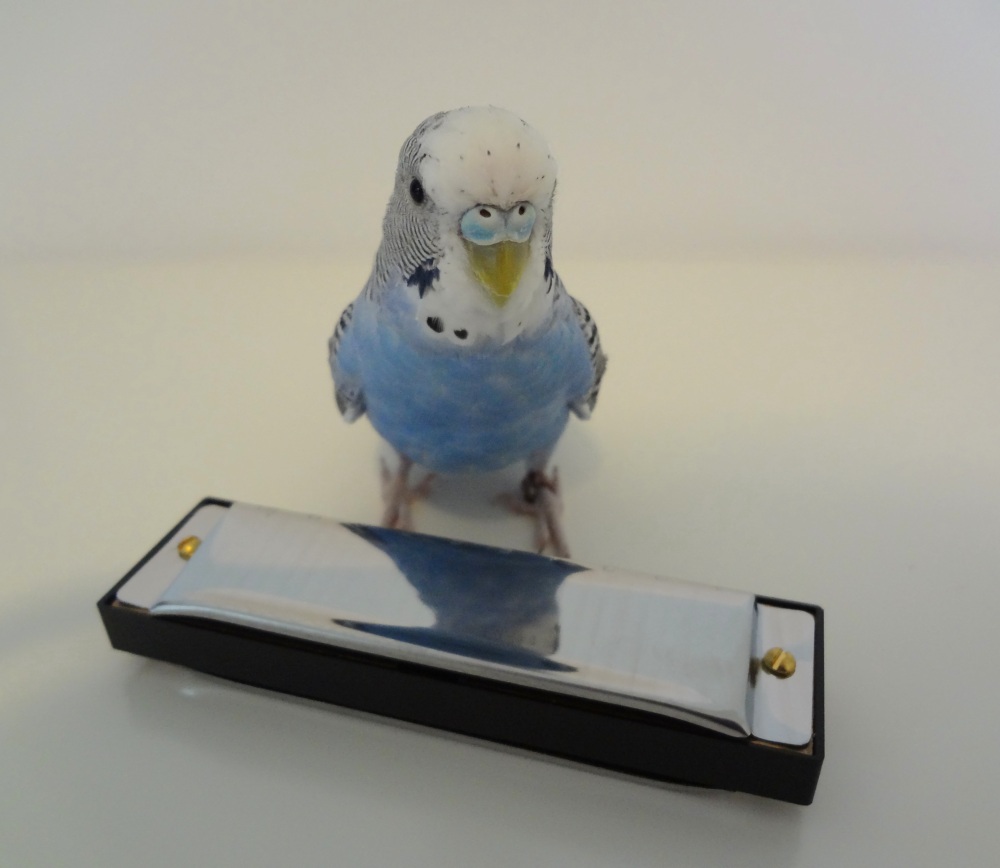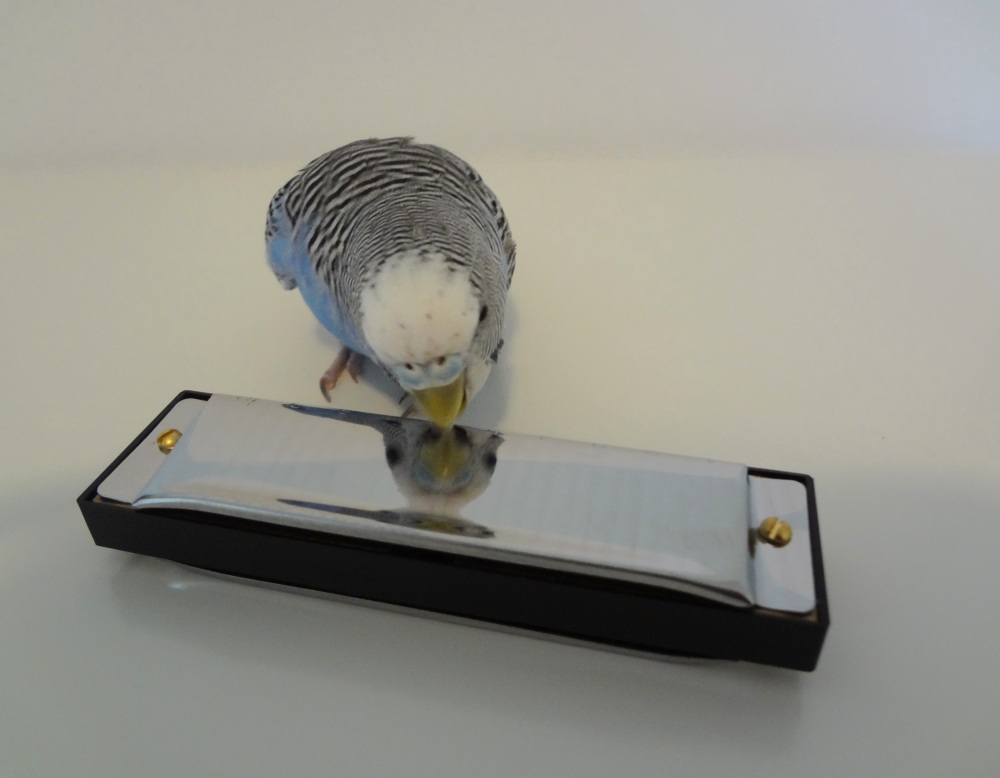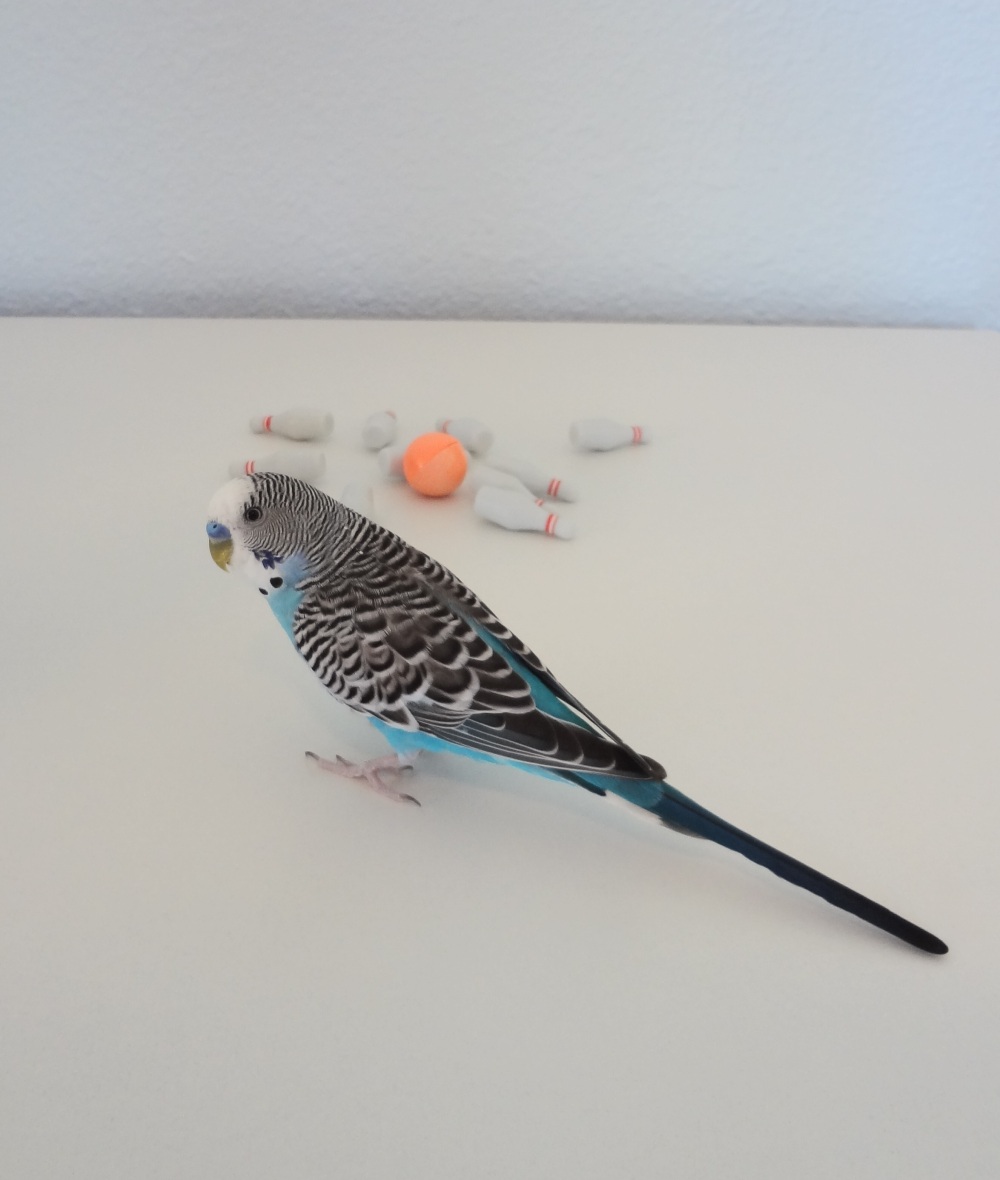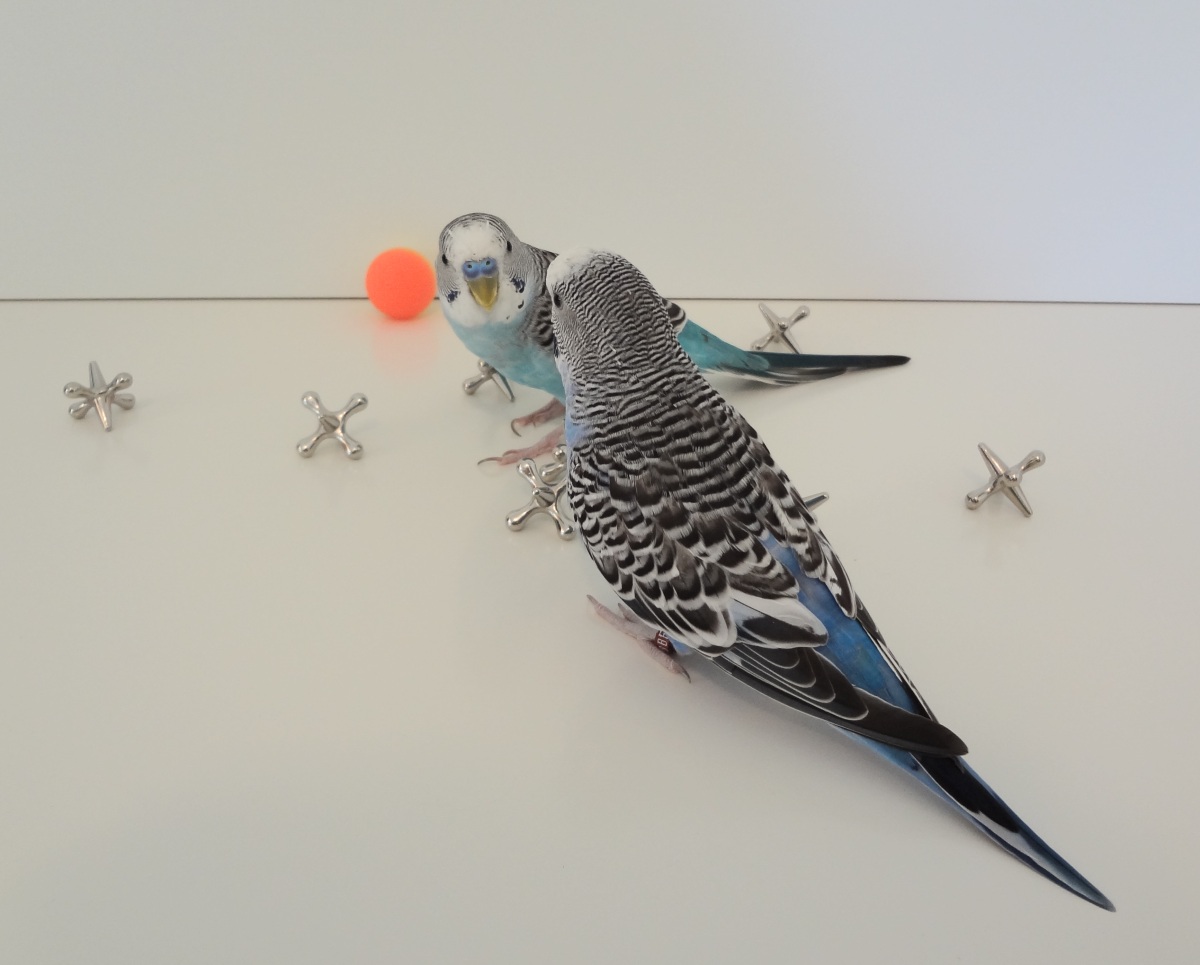 A budgie has between 2,000 and 3,000 feathers on its body. Budgerigar plumage fluoresces under ultraviolet light. This phenomenon is possibly related to courtship and mate selection.
A budgie has between 2,000 and 3,000 feathers on its body. Budgerigar plumage fluoresces under ultraviolet light. This phenomenon is possibly related to courtship and mate selection.
Budgies poop every 12 to 15 minutes.
Budgies can register 150 images per second (humans can only register 16 images per second).
Budgies have a 3rd eyelid and see in color. They have monocular vision (they use each eye independently).
Budgies have fewer taste buds than humans.
Budgies can turn their heads 180 degrees.
During breeding season, a female bird’s bones become denser as they store calcium–a female’s skeleton can weigh up to 20% more during the breeding season that it does during the rest of the year.
Budgies, like all parrots, have 2 toes that face forward and 2 that face back unlike other birds who have 3 toes facing forward and 1 facing back.
Budgies do not have a bladder or sweat glands.
The average lifespan of a budgie is 5 to 10 years. With good care, budgies can live up to 15 years. According to the Guinness Book of Records, the oldest budgerigar lived in England. He was named Charlie, and he lived 29 years and 2 months.
Both male and female budgies can learn to talk, but singing and mimicry are more pronounced and better perfected in males. Females rarely learn to mimic more than a dozen words. Males can easily acquire vocabularies ranging from a few dozen to a hundred words. Pet males, especially those kept alone, are generally the best speakers.
Puck, a male budgie, holds the world record for the largest vocabulary of any bird, at 1,728 words.
Females are typically highly dominant and more socially intolerant.
All budgie colors originate from the green and yellow budgie.
Budgerigar supposedly means “good to eat” in aboriginal language.
Cooper, Dewey and Ozzie are the cutest budgies in the universe.



















